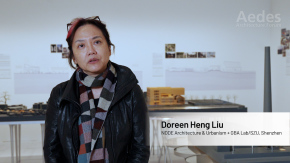Water plays a key role in times of the climate change – both as an essential resource and as a potential threat. Rising sea levels, floods, and droughts demand innovative approaches in architecture and urban planning. Wind Blows, Water Rises is dedicated to the research-based work of Doreen Heng Liu and her office NODE, which focuses intensively on the Pearl River Delta in China – one of the world’s most densely populated metropolitan regions. The exhibition showcases 13 projects that highlight the rapid urban transformation and the challenges in managing infrastructure and public space. A highlight is the research project Water and Urbanization, which was initiated by Liu at Shenzhen University. It explores water ecosystems and offers concrete solutions for how water can be used as a driving force for sustainable urban development in other regions as well.
Following Shenzhen-ness (2018), Wind Blows, Water Rises is the second exhibition initiated by Doreen Heng Liu at Aedes Architecture Forum.
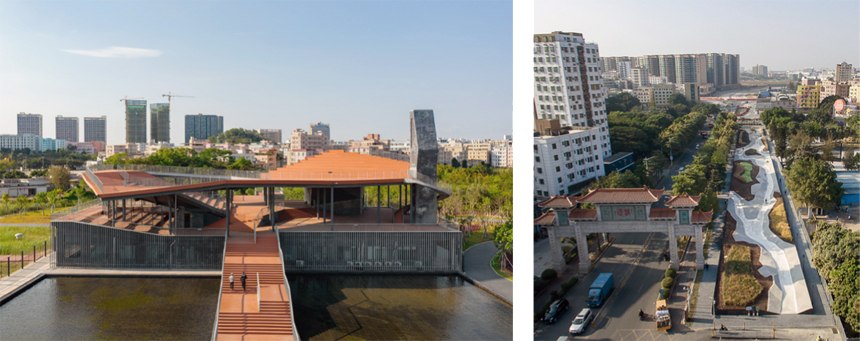
Pingshan Terrace, Shenzhen, CN, 2019 © Chao Zhang | KU Landscape Memories on Terrain, Shenzhen, CN, 2019 © Chao Zhang
The Pearl River Delta, on the South China Sea, has been shaped by both natural forces and human intervention, with water being a core element. Today, it is one of the fastest-growing, most densely populated urban areas in the world, facing significant challenges, particularly in balancing urban space. Shenzhen, one of the region’s most dynamic cities, exemplifies this transformation. Since the 1980s, it has experienced rapid population growth, now home to around 20 million people.
The Chinese idiom "Wind Blows, Water Rises" reflects the interaction between natural forces and human influence. Wind represents change, while water signifies the growth that follows. The phrase suggests that these forces can combine to foster prosperity and sustainable development. In Doreen Heng Liu’s work, it addresses the complex relationship between rapid urbanisation, water management, climate change, and sustainable urban growth. The aim is to design processes where these forces reinforce one another, achieving a balance between growth and sustainability.

Pingshan High School Pedestrian Bridge, Shenzhen, CN, 2019 © Chao Zhang
Architectural Projects and Urban Research
The exhibition Wind Blows, Water Rises at Aedes presents projects by the GBA Lab (Greater Bay Area Innovation Design Lab) and NODE Architecture & Urbanism in Europe for the first time. The selected works offer a cross-section of Shenzhen and the Pearl River Delta’s transformation, proposing innovative solutions for a "new water-land balance" that meets environmental, social, and industrial needs. The exhibition includes architectural models, photographs, drawings, films, and installations and is divided in two sections:
NODE: A practice in Shenzhen
Realised projects by NODE are presented, each adapted to the unique context of the Pearl River Delta. Each project responds to its site while exploring future development possibilities. NODE’s work prioritises the public good, creating urban elements that promote a sense of belonging. The projects are organised into three themes: the first focuses on urban regeneration, particularly the reuse of industrial sites as Shenzhen transitions to a service-based city. The second examines water-related infrastructure, integrating community, spirit, and aesthetics. The third explores new infrastructure types, connecting them to regional garden designs or universal urban models.
Water and Urbanization: The case of Shenzhen
This GBA Lab research on urban water environments offers both general and specific perspectives. The rapid urbanization of the Pearl River Delta, especially in Shenzhen, has led to challenges such as land scarcity, resource depletion, and environmental degradation. GBA Lab proposes five design scenarios using Shenzhen as a case study, aiming to integrate water management, infrastructure, and urban redevelopment for climate resilience and cultural identity.
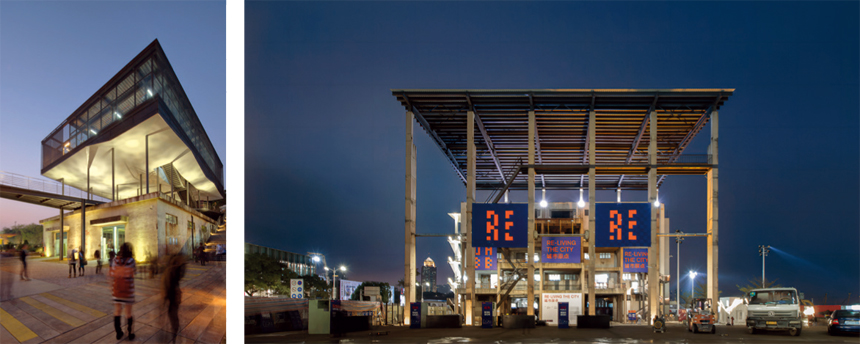
Fufa Glass Factory Entrance Renovation, Shenzhen, CN, 2013 © Chao Zhang | Dacheng Flour Factory Renovation, Shenzhen, CN, 2015 © Chao Zhang
About
Founded in 2004 by Doreen Heng Liu, NODE is a leading architectural practice in South China. Focusing on urban space and public life, NODE blends practical solutions with innovative design, addressing urban regeneration, cross-border infrastructure, and experimental architecture through interdisciplinary research and collaboration.
Established in 2021 by Doreen Heng Liu, Distinguished Professor at Shenzhen University, GBA Lab (Greater Bay Area Innovation Design Lab) tackles global urbanisation challenges, with a focus on South China. The lab integrates research, teaching, and exhibitions to create human-centred solutions for contemporary urban and rural issues, aiming to shape sustainable, dynamic cities for the future.
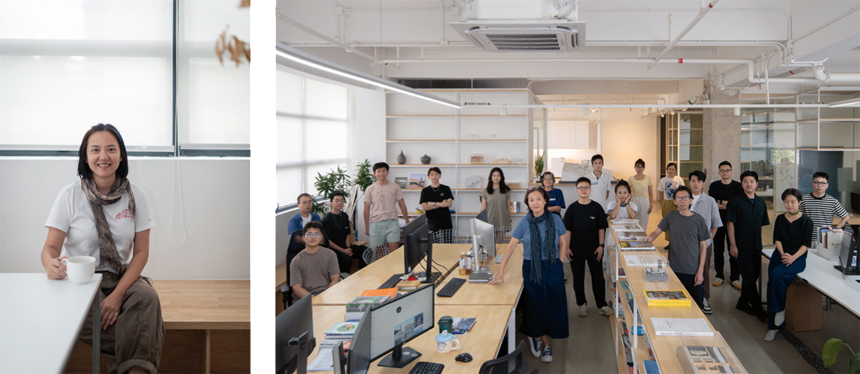
Doreen Heng Liu © NODE | NODE and GBA Lab 2024 © NODE+GBA Lab
Aedes Catalogue
English/Chinese, 10€
> Order here
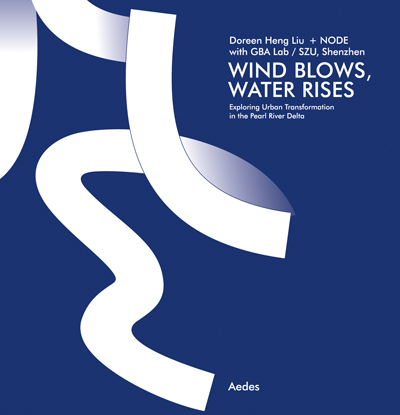
Generously supported by
Fok Ying Tung Ming Yuan Development Company Limited; School of Architecture & Urban Planning, Shenzhen University
